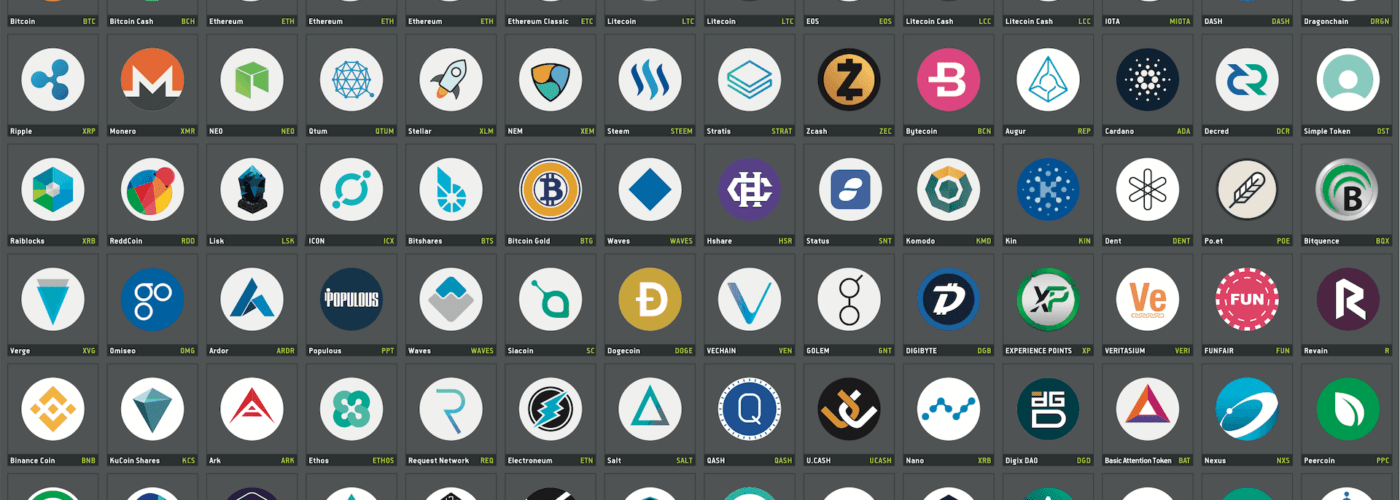Cryptocurrency is decentralized digital money that’s based on blockchain technology. You may be familiar with the most popular versions, Bitcoin and Ethereum, but there are more than 5,000 different cryptocurrencies in circulation.
How Does Cryptocurrency Work?
A cryptocurrency is a medium of exchange that is digital, encrypted, and decentralized. Unlike the U.S. Dollar or the Euro, there is no central authority that manages and maintains the value of a cryptocurrency. Instead, these tasks are broadly distributed among a cryptocurrency’s users via the internet.
You can use crypto to buy regular goods and services, although most people invest in cryptocurrencies as they would in other assets, like stocks or precious metals. While cryptocurrency is a novel and exciting asset class, purchasing it can be risky as you must take on a fair amount of research to fully understand how each system works.
Bitcoin was the first cryptocurrency, first outlined in principle by Satoshi Nakamoto in a 2008 paper titled “Bitcoin: A Peer-to-Peer Electronic Cash System.” Nakamoto described the project as “an electronic payment system based on cryptographic proof instead of trust.”
That cryptographic proof comes in the form of transactions that are verified and recorded on a blockchain.
What Is a Blockchain?
A blockchain is an open, distributed ledger that records transactions in code. In practice, it’s a little like a checkbook that’s distributed across countless computers around the world. Transactions are recorded in “blocks” that are then linked together on a “chain” of previous cryptocurrency transactions.
With a blockchain, everyone who uses a cryptocurrency has their own copy of this book to create a unified transaction record. Software logs each new transaction as it happens, and every copy of the blockchain is updated simultaneously with the new information, keeping all records identical and accurate.
To prevent fraud, each transaction is checked using one of two main validation techniques: proof of work or proof of stake.
Proof of Work vs Proof of Stake
Proof of work and proof of stake are two different validation techniques used to verify transactions before they’re added to a blockchain that reward verifiers with more cryptocurrency. Cryptocurrencies typically use either proof of work or proof of stake to verify transactions.
Proof of Work
“Proof of work is a method of verifying transactions on a blockchain in which an algorithm provides a mathematical problem that computers race to solve,” says Simon Oxenham, social media manager at Xcoins.com.
Each participating computer, often referred to as a “miner,” solves a mathematical puzzle that helps verify a group of transactions—referred to as a block—then adds them to the blockchain ledger. The first computer to do so successfully is rewarded with a small amount of cryptocurrency for its efforts.
This race to solve blockchain puzzles can require an intense amount of computer power and electricity. In practice, that means the miners might barely break even with the crypto they receive for validating transactions, after considering the costs of power and computing resources.
Proof of Stake
To reduce the amount of power necessary to check transactions, some cryptocurrencies use a proof of stake verification method. With proof of stake, the number of transactions each person can verify is limited by the amount of cryptocurrency they’re willing to “stake,” or temporarily lock up in a communal safe, for the chance to participate in the process. “It’s almost like bank collateral,” says Okoro. Each person who stakes crypto is eligible to verify transactions, but the odds you’ll be chosen to do so increase with the amount you front.
If a stake owner (sometimes called a validator) is chosen to validate a new group of transactions, they’ll be rewarded with cryptocurrency, potentially in the amount of aggregate transaction fees from the block of transactions. To discourage fraud, if you are chosen and verify invalid transactions, you forfeit a part of what you staked.
The Role of Consensus in Crypto
Both proof of stake and proof of work rely on consensus mechanisms to verify transactions. This means while each uses individual users to verify transactions, each verified transaction must be checked and approved by the majority of ledger holders.
For example, a hacker couldn’t alter the blockchain ledger unless they successfully got at least 51% of the ledgers to match their fraudulent version. The amount of resources necessary to do this makes fraud unlikely.
How Can You Mine Cryptocurrency?
Mining is how new units of cryptocurrency are released into the world, generally in exchange for validating transactions. While it’s theoretically possible for the average person to mine cryptocurrency, it’s increasingly difficult in proof of work systems, like Bitcoin.
“As the Bitcoin network grows, it gets more complicated, and more processing power is required,” says Spencer Montgomery, founder of Uinta Crypto Consulting. “The average consumer used to be able to do this, but now it’s just too expensive. There are too many people who have optimized their equipment and technology to outcompete.”
And remember: Proof of work cryptocurrencies require huge amounts of energy to mine. It’s estimated that 0.21% of all of the world’s electricity goes to powering Bitcoin farms. That’s roughly the same amount of power Switzerland uses in a year. It’s estimated most Bitcoin miners end up using 60% to 80% of what they earn from mining to cover electricity costs.
While it’s impractical for the average person to earn crypto by mining in a proof of work system, the proof of stake model requires less in the way of high-powered computing as validators are chosen at random based on the amount they stake. It does, however, require that you already own a cryptocurrency to participate. (If you have no crypto, you have nothing to stake.)
Read more – How and where to buy Bitcoin (BTC)
How Can You Use Cryptocurrency?
You can use cryptocurrency to make purchases, but it’s not a form of payment with mainstream acceptance quite yet. A handful of online retailers like Overstock.com accept Bitcoin, but it’s far from the norm.
Until crypto is more widely accepted, you can work around current limitations by exchanging cryptocurrency for gift cards. At eGifter, for instance, you can use Bitcoin to buy gift cards for Dunkin Donuts, Target, Apple and select other retailers and restaurants. You may also be able to load cryptocurrency to a debit card to make purchases. In the U.S., you can sign up for the BitPay card, a debit card that converts crypto assets into dollars for purchase, but there are fees involved to order the card and use it for ATM withdrawals, for example.
How to Use Cryptocurrency for Secure Purchases
Using crypto to securely make purchases depends on what you’re trying to buy. If you’d like to spend cryptocurrency at a retailer that doesn’t accept it directly, you can use a cryptocurrency debit card, like BitPay, in the U.S.
If you’re trying to pay a person or retailer who accepts cryptocurrency, you’ll need a cryptocurrency wallet, which is a software program that interacts with the blockchain and allows users to send and receive cryptocurrency.
To transfer money from your wallet, you can scan the QR code of your recipient or enter their wallet address manually. Some services make this easier by allowing you to enter a phone number or select a contact from your phone. Keep in mind that transactions are not instantaneous as they must be validated using proof of work or proof of stake. Depending on the cryptocurrency, this may take between 10 minutes and two hours.
This lag time, though, is part of what makes crypto transactions secure. “A bad actor trying to alter a transaction won’t have the proper software ‘keys,’ which means the network will reject the transaction. The network also polices and prevents double-spending,” Zeiler says.
How to Invest in Cryptocurrency
Cryptocurrency can be purchased on peer-to-peer networks and cryptocurrency exchanges, such as Coinbase and Bitfinex. Keep an eye out for fees, though, as some of these exchanges charge what can be prohibitively high costs on small crypto purchases. Coinbase, for instance, charges a fee of 0.5% of your purchase plus a flat fee of $0.99 to $2.99 depending on the size of your transaction.
More recently, the investing app Robinhood started offering the ability to buy several of the top cryptocurrencies, including Bitcoin, Ethereum, and Dogecoin, without the fees of many of the major exchanges.
“It was once fairly difficult but now it’s relatively easy, even for crypto novices,” Zeiler says. “An exchange like Coinbase caters to non-technical folks. It’s very easy to set up an account there and link it to a bank account.”
But keep in mind that buying individual cryptocurrencies is a little like buying individual stocks. Since you’re putting all of your money into one security, you take on more risk than if you spread it out over hundreds or thousands, like you could with a mutual fund or exchange-traded fund (ETF). Unfortunately, crypto funds are currently in short supply.
If you want exposure to the crypto market, you might invest in individual stocks of crypto companies. “As far as crypto-oriented stocks go, Coinbase is expected to have an IPO sometime in 2021,” Zeiler says. “There are also a few Bitcoin mining stocks such as Hive Blockchain (HIVE). If you want some crypto exposure with less risk, you can invest in big companies that are adopting blockchain technology, such as IBM, Bank of America, and Microsoft.”
Source: Forbes– Authors: Kate Ashford, John Schmidt.




